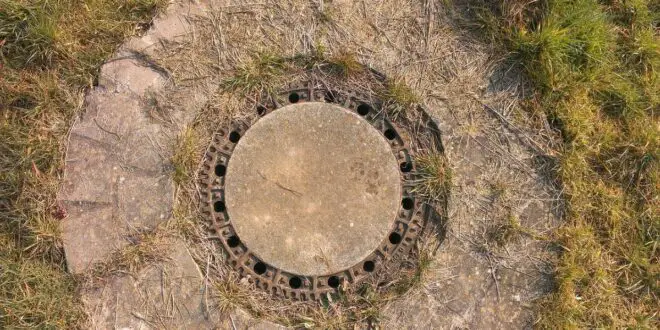Once you flush your toilet, the water and waste usually travel to the septic tank and stay there for a bit before being slowly discharged away. If you are curious, you may wonder if septic tanks have an expiry date. How long does a septic tank last?
Generally, a septic tank should last between 15 to 40 years. The actual age may depend on many factors, such as the environment in which it is placed. The materials used may also affect a septic tank’s age. Heavy use of household cleaners may also shorten their lifespan.
This article explores the septic tank. How it works, and how long they last. We also look into what may cause the tank to deteriorate faster and how much it costs if you intend to install or replace your tank.
Finally, we also look at how you can inspect a septic tank for regular maintenance and how to fix some common issues with septic tanks.
What Are Septic Tanks?
Septic tanks are underground chambers that process wastewater from our homes. It allows time for solids and scum to separate from the water and provides an environment for the bacteria to digest away many solid wastes and scum. The remaining water is usually sent to a septic drain field for further processing.
A septic tank is a storage, or chamber, usually made of fiberglass, concrete, or plastic. It is used to do basic sewage treatment. It is commonly planted underground, as many see it as an eyesore.
A septic tank is usually large to ensure it can hold onto the wastewater well. Common septic tanks can hold between 4,000 to 7,500 liters of water (1,000 – 2,000 gallons approx.). A septic tank may have two pipe connections, one to receive wastewater and the other to drain wastewater away for further processing.
Modern septic tanks may have two chambers, each hosting an access opening and cover. A dividing wall separates the chambers, with openings about midway between the floor and the roof.
The word ‘septic’ is used to describe the tank because of the anaerobic bacterial environment that the tank creates inside. It helps to decompose or mineralize wastes that were sent to the tank.
Septic tanks are popular in rural areas where no sewage systems are present. This means the septic tanks will be the base of an onsite sewage treatment system. In such a system, the wastewater is then pumped and discharged at a septic drain field.
The septic drain field relies on the soil for further treatment, breaking down microorganisms and absorbing excess nutrients into the soil. The clean water is then reabsorbed into the groundwater. However, such processing methods may still cause pollution to groundwater.
How Does A Septic Tank Work?
A septic tank takes in wastewater and then allows the solids and scum to separate themselves from the water. The anaerobic environment helps bacteria to digest most solid matter. The remaining liquid is then sent to the septic drain field, where the soils will further clean the water to the point it is no longer a pollutant.
There are several methods for a septic tank to process wastewater, but the following process is the most common.
Usually, once dirty water goes down the drain, it travels to the septic tank and settles there. Over time, solid waste sinks down to the tank’s base, while oil, grease, and other scum float to the top.
The anabolic environment in the tank usually causes the solid wastes to be digested by the bacteria, becoming either gas or liquid. This reduces the amount of solid inside the tank. The remaining liquid may float through the dividing wall to enter the second chamber, where further processing occurs.
The excess liquid, which may now be clear, drains from the outlet and is sent to a septic drain field. You may also hear it as a leach field, drain field, or seepage field. A septic drain field usually is an area specifically selected to process septic tank water, as it has the right porosity.
The septic drain field works like a series of filters, processing and cleaning up the septic tank water. Any solids are trapped and absorbed by the soil. At the same time, excess water is removed through percolation into the soil, evaporation, or being absorbed by nearby plants for their water needs.
Drain fields usually clean the water well enough that this water may reenter underground water systems and not present any harmful bacteria.
Whatever remaining solids may accumulate over time in the tank, reducing the septic tank’s capability to process wastewater. A vacuum truck is often used to suck the solid wastes away from a septic tank, freeing up the capacity to restore its processing ability.
How Long Does A Septic Tank Last?
A septic tank usually lasts around 15-40 years. Many factors influence the age of your septic tank, such as the material. The soil environment it was placed in may also influence its age. Heavy use of household cleaners may also deteriorate your septic tank faster.
Septic tanks are made to last, many tank makers make them with solid, sturdy materials that can stand the test of time and pressure, such as concrete or fiberglass. There may be cases where a new house owner installed a septic tank once and never has to replace it until he passes away.
It is expected that most septic tanks should last around 15-40 years. The large gap is because your septic tank’s age may be influenced by many factors:
Material Used
It will likely last longer if your septic tank is made from sturdy, hardy material. Common materials used to make septic tanks are concrete, steel, fiberglass, and plastic. It is commonly accepted that concrete tanks last the longest, although they are the hardest to install.
Fiberglass tanks also last quite a long, although they may not outlast a concrete tank. Plastic tanks may be the first to fail, although modern polyethylene plastic tanks are improving.
Soil Environment
This may be out of your control. You likely have purchased or built your home without checking the soil quality. Generally, if the soil is acidic, it is more likely to deteriorate septic tanks faster.
Another issue to think about is roots. If you place your septic tank close to trees or shrubs, the roots of these plants may grow and press against your septic tank or the piping, likely breaking them.
Maintenance
It is normal to see things well maintained and lasting longer; the same could be said about septic tanks. Regular maintenance should be done on septic tanks, even if they are underground.
Common maintenance procedures for septic tanks include vacuum pumping and regular biology activity treatment. It is advised to clean your septic tank every 2-3 years.
Household Cleaners
If you use a lot of household cleaners at home, you are likely to wear out your septic tanks earlier. These cleaners may clean your toilet or sink well. However, they also may corrode or eat away your septic tank’s wall, especially if they’re made of fiberglass or plastic.
Household cleaners that may hurt your septic tank most would be drain cleaners, bleach, or anything that relies on acidity or alkalinity to clean.
Installations
Suppose your septic tank is not installed properly. For example, not completely buried or tilted. In that case, you are likely to wear out your tank earlier. This is because tanks exposed to the sun may be slowly broken down by the sunlight, especially if they are made of plastic.
Tanks tilted may be forced to perform their job at a condition less ideal, likely to wear it down faster.
Use and Abuse
Suppose you are the kind that flushes anything or everything down the toilet or sends any solids from the kitchen sink down the drain. In that case, you will likely shorten your septic tank’s lifespan.
This is because these materials are not designed to be processed in septic tanks. They are not likely to break down in tanks and may remain there for a long time until it gets pumped away into vacuum trucks.
They also fill up your septic tank, causing it to have more sludge. As a result, your septic tank may have less time to allow solids and scum to separate, sending all the water to the drain field. This will likely pollute the drain field and introduce bacteria dangerous to human health to the groundwater.
Avoid flushing down things such as cigarette butts, diapers, tampons, cat litter, coffee grounds, and anything solids into the drain. They belong to the trash or recycle bin.
How To Inspect A Septic Tank?
To inspect a septic tank, you start by preparing the necessary tools, such as scum sticks and sludge sticks. You then inspect the tank’s condition, such as the condition of the doors, baffles, or partition wall. You also check if the tank is leaking. Inspections are done visually and using tools to prod into the tank.
Inspecting a septic tank should be done yearly to ensure your septic tank complies with the requirements of your local government. If your tank is broken, you usually have to replace it immediately.
Fortunately, inspecting septic tanks is not rocket science. You can actually do it as a DIY project. Here are the steps to inspect a septic tank yourself.
Prepare The Tools
The tools required to inspect septic tanks include the list below. These tools and equipment help you to safely and properly conduct inspections.
- A scum stick. This can be made by assembling a 10-foot PVC pipe and parts into a long L shape. You will use the to prod for scums in your septic tank.
- A sludge stick. Prepare a 10-foot PVC pipe and tape up to 4 feet of one end with Velcro tape.
- A Sharpie pen to mark your pipes when measuring scum depth.
- A measuring tape to measure scum and sludge depth.
- Rubber boots, to keep your feet away from potential pollutants.
- Rubber gloves to keep your hands clean.
- Eyeglasses protect your eyes from septic water splashes.
- N95 Face masks to ensure you do not breathe in the septic tank fumes.
Now that you have the tools ready, you can inspect your septic tank.
Visually Inspecting Areas Around Septic Tank
The first stage involves you conducting a visual inspection of the septic tank. It would not give you any definite results but may serve as a warning sign if your septic tank has issues.
Start by observing the septic tank, and check if:
- There is a foul odor around the septic tank.
- If there are wet spots that smell bad.
- There are spots with exceptionally lush vegetation or grass.
If you can detect these issues, you will likely have issues with your septic tank. However, before you call a professional, you can proceed with a further inspection to confirm the issue before getting further help.
Opening The Septic Tank
The main key when opening the septic tank here is to stay safe and practice steps that prevent you from breathing in the fumes from the tank or falling into the tank.
- Start by putting all the safety equipment on.
- Go down to your septic tank, and open the septic tank lids. There should be two risers or openings, one for each tank compartment.
- When opening, ensure not to place your head directly above the tank riser to avoid breathing in too much gas from the tank. It may overwhelm you.
- Once opened, place the lid in front of the risers. This ensures you do not mix up which lid is used for which risers of your septic tank.
- From this point forward, throughout the inspection, always position yourself behind the sewage risers to avoid stepping back and falling into the septic tank.
- It would help if you also refrain from using your hands to touch any body parts, especially your face. This is because septic tanks may contain harmful bacteria, and touching your body may introduce them.
Inspecting The Septic Tank Risers
The next inspection step involves checking if your septic tank risers are in good shape. The risers may be closed to the ground and easily be exposed to sunlight or temperatures that may make them leak or crack.
- Start by running a water hose around the tank risers. Observe any water seeping into the ground too quickly or if the riser is watertight.
- If you suspect leakages on your risers, contact your local septic tank professional for further inspection.
- If there are none, continue with the next step.
Inspecting Waste Water Depths
This stage of inspection requires you to visually inspect the depth of the wastewater inside the septic tank.
- When you open your septic tank, you should be able to see how close the wastewater scum is to your riser. If possible, locate the position of your septic tank’s baffle and outlet pipe.
- A healthy septic tank should have the water resting just below the outlet pipe.
- If the wastewater scum layer is too close to the riser or covers the baffle, your septic tank may be too full. Call for a vacuum truck to pump it clean.
- You may have a leaking septic tank if the wastewater is too low. Call for a septic tank professional for further repairs.
Measuring Sludge And Scum Depths
This stage involves you measuring the depths of the sludge and scum to see if you need to pump the tank clean. Septic tanks with too much sludge or scum may overflow faster, meaning the solids and scums have little time to settle before they get flushed to the drain field.
- Pull out your scum measuring stick. Lower the L-shaped side into the riser. The moment the stick touches the surface of the scum, mark the pipe with a sharpie pen, level to the riser.
- Continue to lower the stick into the scum and wait a few seconds. Then slowly pull up until you can feel the resistance of the scum on your stick.
- Stop, and mark your stick with your sharpie, level to the riser.
- Measure the distance between both the sharpie markers for the scum depth.
- Repeat the same process on the other riser if you have two risers for your septic tank.
- If your scum depth is more than 6 inches, call for a vacuum truck to pump your tank clean. If it is less than 6 inches, proceed with the inspection.
- Now, we will proceed with the sludge inspection.
- Take the sludge measuring stick, and lower the end with Velcro tape into the riser.
- Stop when the stick reaches the bottom of the septic tank. Wait for 3 minutes.
- Carefully remove the stick, and then lie it down on a piece of tarp. You should see some sludge marks on the Velcro. Measure the length of the sludge marks.
- If your sludge depth is more than 12 inches, call a vacuum truck to pump your septic tank clean.
How Much Money Is Needed To Replace A Septic Tank?
Suppose your septic tank is broken and needs replacement. In that case, you may be looking at $1,200 to $8,000 in pumping, removal, and installation costs. Polyethylene septic tanks are cheaper and easier to install than fiberglass, steel, or concrete septic tanks.
Suppose that during the inspection, you discovered a major problem with your septic tank and gave a professional a call to further check it.
They conducted inspections and discovered that the septic tank had issues beyond fixing, and a replacement was needed.
In that case, you are looking at a bill of around $1,200 to $8,000. The final bill can differ a lot, depending on many factors:
Materials
If your new septic tank is made of hardier, sturdier materials, it may cost more. Generally, the most affordable septic tanks are those made from polyethylene plastic. They are also lightweight and are much easier to install than fiberglass or concrete septic tanks.
However, it does not last long. More expensive septic tanks may last longer, so you get what you paid for.
Installation
If installing a septic tank for your home is more complicated than expected, be prepared to foot a bigger bill. This may include installing the septic tanks further away from the house or having a further drain field.
For larger houses with more wastewater, multiple septic tanks are also required. This means additional work to connect these tanks. This additional work would definitely push up the final pricing.
Size Of Septic Tank
Septic tank sizes would definitely affect the final pricing. The larger it is, the more expensive they are. Small septic tanks usually start at around 4,000 liters (1,000 gallons approx.) and may be as big as 7,500 liters (2,000 gallons approx.).
Additional Preparation Work
If you require preparatory work before installing a new septic tank, the prices may also be more expensive. Additional preparation may include pumping clean old tanks, removing old septic tanks, clearing and disinfecting soil, and many more.
 Being Human
Being Human




